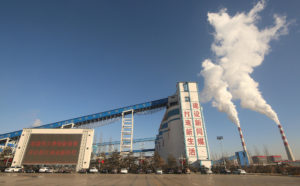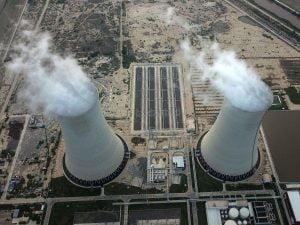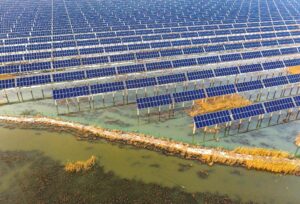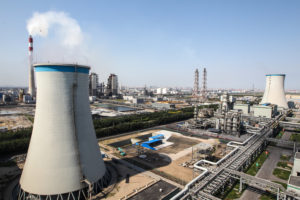In a time of conflicting signals on China’s energy future, the implementation of its national emissions trading system offers unique opportunities to put the country on a long-term path toward lower greenhouse gas emissions.
Even before the Covid-19 crisis, China seemed to be at an inflection point in its energy policy, with fossil fuel consumption growing rapidly after plateauing during the latter half of the 2010s and a slowdown in the growth of renewable energy projects. As the country recovers, restrictions on the construction of new coal-fired power plants have been loosened, with more approvals in March 2020 than in the whole of 2019, and major new areas opened up for new coal mines. An influential power sector body, the China Electricity Council, has also called for the cap on coal-fired power generation capacity to be increased to 1300 gigawatts (GW) by 2030, which is 290GW higher than current levels. This risks stranded assets and lock-in to a higher carbon path.
At the same time, China’s draft energy law stresses the need to cut greenhouse gas emissions in its energy system, and scenarios consistent with Paris Agreement climate goals require major reductions in China’s coal-fired power generation. The law would establish guaranteed minimum levels of renewables in each province, and give renewables priority access to the electricity grid. The government is also promoting ultra-high voltage (UHV) power transmission to take renewable electricity to where demand is greatest and reduce renewables “curtailment”, as part of its “neo-infrastructure” Covid-19 economic recovery package.
In the coming months, China has an opportunity to strengthen its targets for 2030 greenhouse gas reductions under the Paris Agreement as it develops its 14th Five Year Plan, setting its top-level energy and climate policy blueprint for 2021 to 2025. These are hugely important commitments that should be based on an integrated energy and climate policy framework, to put China on a long-term path to lower emissions.
Emissions trading
China’s national emissions trading system should play a significant and central role in cost-effectively meeting the challenge to lower emissions. It will operate first for the power sector before rolling out to industry sectors.
The emissions trading system will reward more efficient and lower carbon power stations, as they will need to make fewer emissions reductions to comply and could profit from trading. The “tradable performance standard” benchmark approach sets emissions targets relative to output. In other words, it incentivises certain enterprises to emit less greenhouse gas per unit of electricity they produce. This approach allows for emissions to be aligned with the economy, making it well-suited to economic shocks and recoveries like those surrounding Covid-19.
Careful design decisions are needed, however, to ensure that the emissions trading system provides strong incentives for greenhouse gas reductions. Specifically, China’s system will provide the greatest reward for low carbon action if the benchmarks are not highly different across categories such as fuel type, technology and the like. The level at which the benchmarks are set will determine the amount of emissions reductions. The benchmark design is therefore very important and should be informed by detailed economic and environmental modelling at national, provincial and enterprise levels. The government is expected to allocate a high proportion of emissions credits – which provide the right to emit – for free during early phases of the system, making the initial cost impacts on enterprises relatively low. Furthermore, the modelling should consider economically viable fuel switching options, especially reflecting the increasing competitiveness of renewable energy.
For the emissions trading system to realise its full potential in driving cost-effective mitigation in the power sector, a clear and efficient way of passing through carbon prices to electricity prices is needed. This would enable high levels of auctioning, where power companies pay for their allowances instead of getting them free. The result would be an increase in the operating costs of power stations in proportion to the carbon intensity of their fuel. Coal-fired power stations have high carbon intensity so will face the biggest cost increases. This will reduce their operating hours and discourage investments in new ones. Gas and renewables will then be further encouraged and have a greater share in the energy mix.
Ways of passing through carbon prices to electricity prices are feasible but politically challenging as they would typically involve working across government ministries. Developing and implementing such a mechanism should be a priority work area to be pursued by the government, taking into account wider power market reform plans.
The most important thing about an emissions trading system is to get it started soon. China should not wait for a perfect system.
Such a well-functioning emissions trading system will drive additional emission reductions in the power sector as electricity consumers reduce their usage and apply more energy efficiency measures. As such, the net effect on electricity bills will be more limited than implied by the increase in prices. If necessary, targeted financial support measures could be considered for vulnerable electricity consumer groups. For example, in the EU some electricity-intensive enterprises receive compensation for these higher prices so they do not move production to jurisdictions with less strict climate policies (avoiding so called “carbon leakage”).
A huge amount of auction revenue – hundreds of billions of yuan – can be raised under this approach. Using this revenue to support low-carbon projects, such as in the EU and as planned in South Korea, could also help develop opportunities and technologies for China itself to accelerate its own mitigation effort. Industry, for example, will need substantial funding to implement the deep decarbonisation technologies, such as hydrogen steelmaking, necessary to meet long-term targets. Establishing a system to allocate funds in this way will require significant inter-ministerial cooperation, and should be an important priority.
As well as this long-term benefit, industry should also appreciate that the emissions trading system is “business-friendly” in the short- and medium-term. This is because it gives enterprises flexibility in how they comply, enabling them to choose the most cost-effective approach, and rewards them for their low-carbon actions.
Whilst a concern of industry can be about carbon leakage due to the lack of a level playing field in climate-mitigation policy, there are effective design approaches to mitigate this risk, and as other countries are adopting similar policies, this becomes less of an issue. In Asia alone, South Korea has a successful emissions trading system with over five years of operating experience; Thailand plans to develop a system and has done significant preparation; Indonesia plans to launch a pilot system later this year and a national system by 2024; Vietnam is planning to design a system this year; and a senior Philippines member of congress is introducing a bill to establish a system for the biggest emitting sectors.
Above all, the most important thing about China’s national emissions trading system is to get it started soon. China should not wait for a perfect system. It can find solutions during implementation.
These steps will help China with its post-coronavirus green recovery and help put the country on a path to lower emissions, in line with the priorities of President Xi Jinping and Paris Agreement climate goals.








